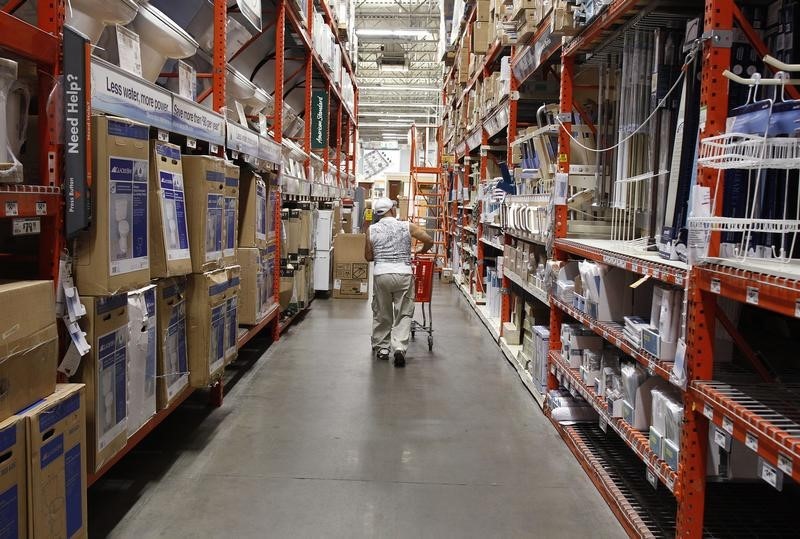WASHINGTON, (Reuters) - U.S. economic growth was a bit more sluggish than initially thought in the second quarter as businesses aggressively ran down stocks of unsold goods, offsetting a spurt in consumer spending.
Gross domestic product expanded at a 1.1 percent annual rate, the Commerce Department said on Friday in its second estimate of GDP. That was slightly down from the 1.2 percent rate reported last month.
The revision also reflected more imports than previously estimated as well as weak spending by state and local governments. The economy grew at a 0.8 percent pace in the first quarter. It grew 1.0 percent in the first half of 2016.
The revision to second-quarter GDP growth was in line with economists' expectations. The economy has struggled to regain momentum since output started slowing in the last six months of 2015, which puts it in danger of stalling.
While data so far for the third quarter has been mixed, a strong labor market should continue to support consumer spending and underpin growth in the coming quarters. Output will also likely get a boost as businesses restock warehouses after liquidating inventories in the second quarter.
The government also reported that after-tax corporate profits fell at a 2.4 percent rate last quarter after increasing at an 8.1 percent pace in the first quarter. Weak profits could limit an anticipated rebound in business spending.
With profits declining, an alternative measure of growth, gross domestic income, or GDI, increased at only a 0.2 percent rate in the second quarter, the weakest since the first quarter of 2013. GDI measures the economy's performance from the income side. It increased at a 0.8 percent pace in the first quarter.
Business inventories fell $12.4 billion in the second quarter, the first drop since the third quarter of 2011, instead
of the $8.1 billion reported last month.
As a result inventories sliced off 1.26 percentage points from GDP growth, the largest drag in more than two years, and up from the 1.16 percentage points subtraction in last month's estimate.
It was the fifth straight quarter that inventories weighed on output. Economists say some of the inventory drawdown could partially be attributed to robust consumption.
Consumer spending, which makes up more than two-thirds of U.S. economic activity, was revised up to show it increased at a 4.4 percent rate -- the fastest since the fourth quarter of 2014. Consumer spending, which was previously reported to have
advanced at a 4.2 percent rate, accounted for the bulk of the rise in output last quarter.
With consumption accelerating, imports were revised to show them growing at a 0.3 percent rate instead of declining at a 0.4 percent rate. There was also a modest downward revision to export growth. As a result, trade contributed one-tenth of a percentage point to GDP growth in the second quarter instead of 0.23 percentage point as reported last month.
Business spending on equipment fell at a 3.7 percent rate and not the 3.5 percent pace reported last month. Business spending on equipment contracted for a third consecutive quarter, the longest stretch since the 2007-2009 recession, though the pace of decline slowed.
Business spending has been hurt by cheap oil, which has squeezed profits in the energy sector, forcing companies to cut capital spending budgets. There are signs that the worst of the decline is probably over, with a report on Thursday showing demand for manufactured capital goods rising in July for a second straight month.
There were also downward revisions to investment in nonresidential structures, which include oil and gas wells.
Residential construction spending estimates were also trimmed.
